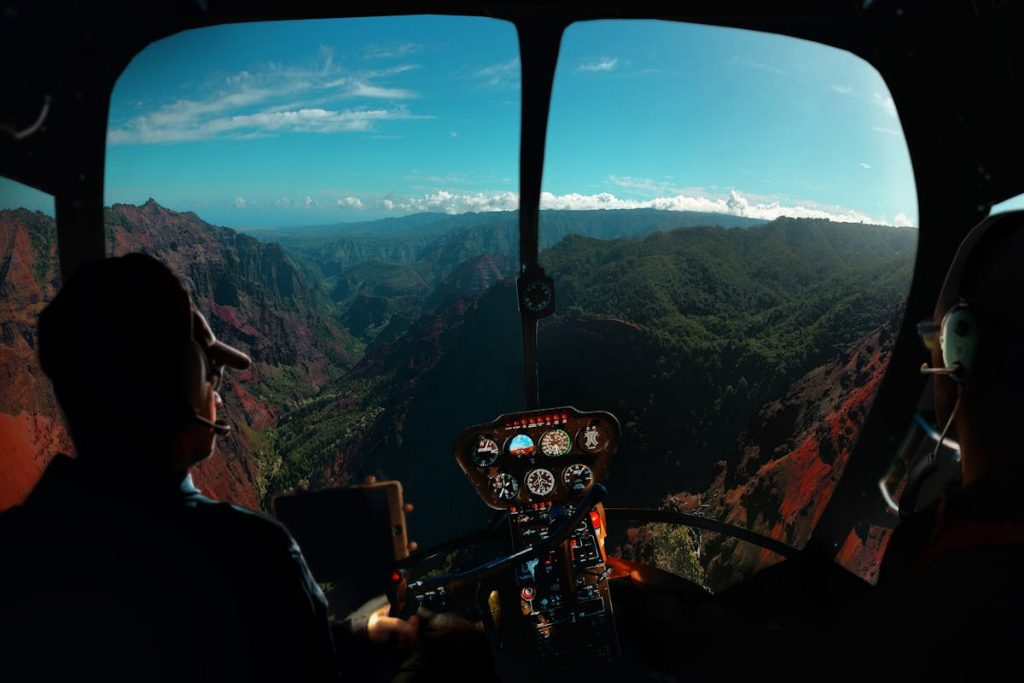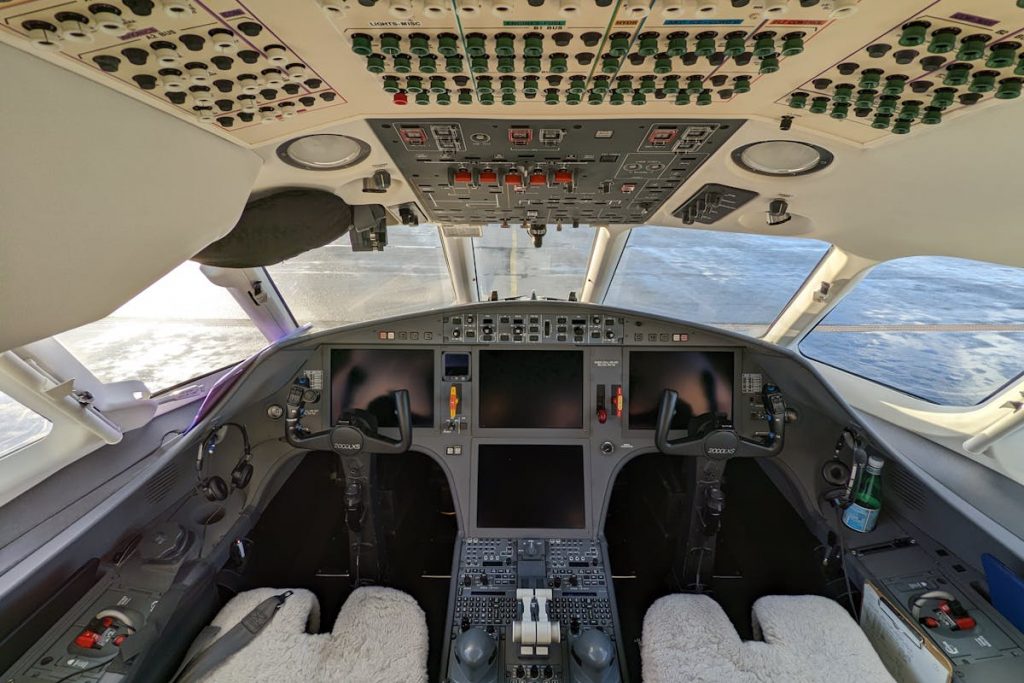- Aviation careers require a passion for flying and significant investment in education and training to attain the necessary qualifications.
- Financial planning and budgeting skills are critical for managing the costs associated with flight training and obtaining pilot licenses.
- Maintaining mental well-being and physical fitness is essential for pilots to handle stress, irregular schedules, and rigorous medical requirements.
- Beyond commercial airlines, the aviation industry offers diverse opportunities, allowing hobbyists to turn their passion into a professional career.
Unfurling its wings into the vast skies, aviation has always been synonymous with aspiration and freedom. While many dream of piloting a commercial airliner, the true potential of an aviation career spans a much broader horizon. In this comprehensive exploration, we chart the pathways from being an aviation enthusiast or recreational pilot to a professional in the more specialized corners of the industry.
Naval aviators, medical transport pilots, cargo masters, and many others all fall within this realm of unforgotten dreams that take flight. For those looking to ascend beyond the conventional blue paths, the wealth of opportunities is skybound and steeped in the romance of the skies.
The Spectrum of Aviation Careers
Commercial Pilot: Beyond the Airlines
Every aviation career typically begins with the thought of becoming a commercial pilot — but the job description extends beyond flying jumbos for global carriers. Consider the dynamic world of cargo, charter, and corporate flying that offers unique challenges and lifestyle advantages.
These roles often give pilots greater freedom in flight planning and can be less hectic than the tight schedules of passenger services. Then there’s the allure of corporate jet setting, which pairs flying expertise with the potential for a high-flying business career. The road to such positions demands steadfast dedication through flight school to the eventual command of your cockpit.
Agricultural Aviation: The High-Flying Farmers
The unsung heroes of agricultural aviation, commonly known as ‘ag pilots,’ fulfill a vital role in global food production. From seeding and spraying to frost prevention, their skills go beyond mere aviating; they must make precision maneuvers at low altitudes while often contending with unpredictable weather and terrain conditions.
Specialized training and an aptitude for precision flying are paramount for pivoting toward an agricultural aviation role. The rewards are direct, tangible contributions to farming operations and the satisfaction of helping to feed the world.
Firefighting and Rescue Services: Heroes of the Sky
Those thrilling red planes dropping water over wildfires and the daring pilots rescuing individuals in dire straits are integral to aviation’s grand tapestry. Aerial firefighting and search and rescue pilots require top-notch flying skills and the ability to keep a level head in high-risk environments.
Their training regimes are rigorous and physically demanding, as they must be ready to leap into action at a moment’s notice. However, the sense of purpose these roles offer transcends the norm; they are literally in the business of saving lives.
Flight Instruction: Teaching the Next Generation
Becoming a certified flight instructor (CFI) is often the first professional step for many pilots. Pilots learn to perfect their skillset in the sandbox of instruction by teaching it, imparting wisdom to new aviators with every takeoff and landing. The joys and challenges of molding raw passion into disciplined prowess make it a rewarding profession, albeit one with its unique hurdles.
Flight instructors serve as mentors and guide through the early stages of a pilot’s career, but the role also presents opportunities for continued education and growth. Many pursue advanced certifications and educational programs to hone their instructing techniques and stay current with industry best practices.
Entering the World of Rotary Wings
The roaring blades of a helicopter evoke a different form of awe, presenting a more intimate and versatile approach to flight. Helicopter pilots often find themselves in critical and immediate roles, such as air ambulance services, tourist operations, news reporting, and executive transportation.

Getting Your Helicopter PPL
Prerequisites and Training Process
Earning a helicopter Private Pilot License (PPL) is essential for those looking to unlock the many diverse roles rotary-wing aviation offers. The process is similar to fixed-wing aircraft: ground school, flight training, and passing a comprehensive exam.
However, the agility and control required for helicopter flying necessitate additional hours of practice and often one-on-one instruction. Students must be ready to dedicate both time and finances to their training, but the rewards include a wider array of potential career choices in the helicopter sector.
Career Paths with a Helicopter PPL
A helicopter PPL opens doors to careers that capitalize on the chopper’s unique abilities. Similar to their fixed-wing counterparts, medical evacuation pilots face different challenges due to helicopter flight’s lower altitudes and vantage points. Meanwhile, tour and news media pilots blend narration and navigation for a visually stunning and informative experience.
Media and tourism are particularly enticing for pilots who appreciate the variety and being on the move. Additionally, the steady growth of urban air mobility offers a peek into the radical shifts aviation is poised to make, and a helicopter PPL is an ideal groundwork for such innovative roles.
Making the Transition
Educational Requirements and Gaining Flight Hours
Transitioning from an aviation hobby to a full-time career is marked by a commitment to accrue flight hours and educational qualifications. For example, an airline transport pilot certificate (ATP) is required for piloting scheduled passenger airliners and helicopters.
Additional type ratings or mission-specific courses may be necessary for specialized roles, such as firefighting or air medical services. Flight hours serve as the currency of the trade, and each hour logged is a step toward professional proficiency.
Networking, Continuing Education, and Finding Your Niche
In any industry, networking can be the golden ticket to new opportunities. Attending industry events, joining professional organizations, and reaching out to established aviators can lead to career-defining connections.
Continuing education, such as advanced ratings and recurrent training, is a must as regulations and technology evolve. Eventually, finding your niche—whether in geographic location, aircraft type, or mission profile—will cement your place in the vast aviation industry market.
Overcoming Challenges: Financial, Physical, and Mental Hurdles
Managing the High Costs of Flight Training
The financial aspect of transitioning into a career in aviation cannot be understated. Flight training costs, aircraft rentals, and educational materials add up, with the price tag for a full-fledged commercial pilot’s license often reaching tens of thousands of dollars.
Scholarships, grants, and loans can help mitigate these costs, but financial planning and budgeting are essential skills to master. It’s an investment in oneself and one’s future that, for many, is worth the sacrifice.
The Importance of Mental Well-being and Physical Fitness
The rigors of a pilot’s life are not solely in the air but also detailed in maintaining mental and physical health. Pilots must be ready to handle stress and irregular schedules and always be responsible for others’ safety.
Physical fitness is not a mere recommendation but a requirement, as pilots must often pass rigorous medical exams. Additionally, mental acuity and staying abreast of developments in aviation safety are vital to a successful and satisfying career in the skies.
Conclusion
For those who hear the call of the wild blue yonder, aviation offers much more than a standard career path. It is an industry where hobbyists can become professionals, and passion melds seamlessly with the profession. Beyond the glamor of commercial airlines lies a vast and diverse realm of opportunities that await those with the courage to reach for the skies.
The advice is to learn, leap, and adapt. Cultivate a love for the lifelong pursuit of learning, transition with informed and strategic steps, network within the community, and prepare for the exhilarating and humbling adventure of a career in the clouds. The view from a pilot’s seat has no parallel — and with determination and perseverance, that view can become a daily privilege.


